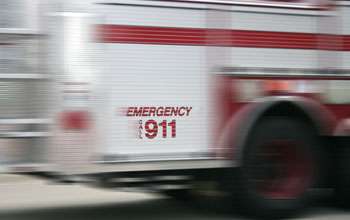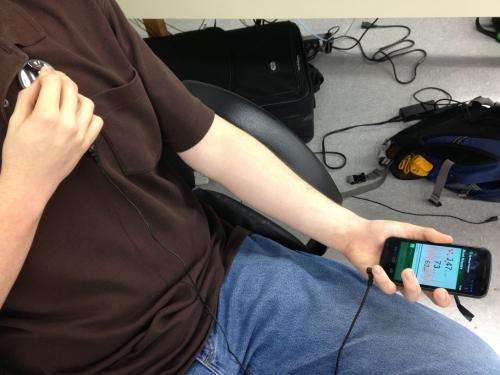Innovative, smartphone emergency apps may enhance emergency response, save lives. Credit: Thinkstock
(Phys.org) —Americans are accustomed to calling 9-1-1 to get help in an emergency. People with dire needs used to reach for landlines and instinctively dial the number. But what happens when the population increasingly turns to cell phones?
A research team lead by Ram Dantu of the University of North Texas sees the growth of cell phone and smart phone usage as an opportunity to improve 9-1-1 response.
With support from the National Science Foundation (NSF), his team designed several innovative smart phone apps that virtually place 9-1-1 operators at the scene of an emergency, allowing them to quickly and accurately collect information, assist victims and help first responders save lives.
"With the current smartphone technology now in everyone's hand, we thought we could do a lot better than just audio calls," said Dantu. "We can actually transmit text; we can transmit images or video. We can revamp or transform the existing emergency dispatch protocols with a next generation 9-1-1."
The victim himself, if physically able, can transmit vital-sign information to emergency responders. Credit: Logan Widick
Dantu and his team's software can accurately monitor a victim's breathing, heart rate and blood pressure and allow 9-1-1 operators to remotely control smart phone cameras so they can view an emergency scene. The software even gives instructions and guidance before and during the administration of CPR.
The software also offers text-to-speech technology for clear communication and provides first responders GPS information of where an incident is taking place.
"Determining location was easier when people called from landlines. Operators could easily figure out where the person lived and the location from where they called," said co-principal investigator Henning Schulzrinne of Columbia University and Chief Financial Officer at the Federal Communications Commission. "Some 70 percent of all emergency calls today are initiated by cell phones. Determining precise location is more challenging, particularly in buildings with many apartments and offices."
Henning worked on the text-to-speech and GPS components of the software. Other co-principal investigators focusing on other aspects of the software, including cybersecurity, were Walt Magnussen and Ana Goulart from Texas A&M University.
"NSF's investment in a testbed for Internet-based 9-1-1 services has supported strong and innovative research and development at Columbia University, the University of North Texas, and Texas A&M University," said Jeremy Epstein of NSF's Secure and Trustworthy Cyberspace Division, which funded the research. "In addition, this work has involved both undergraduate and graduate students, deepening their appreciation of the difficulties of engineering new systems in the real world of deployed emergency calling systems."
"With the advent of new technology, such as smart phones and different sensors, we should be able to get all the vital information to the 9-1-1 operators so that they can actually dispatch resources within a sixty second timeframe—that is the objective of this project," said Dantu.
Dantu will demonstrate these apps at next week's 2013 National Emergency Number Association conference, the largest annual gathering of 9-1-1 operators in the United States, to be held in Charlotte, N.C. There he hopes and expects that emergency operators will assess the software and provide valuable feedback.
Provided by National Science Foundation




















